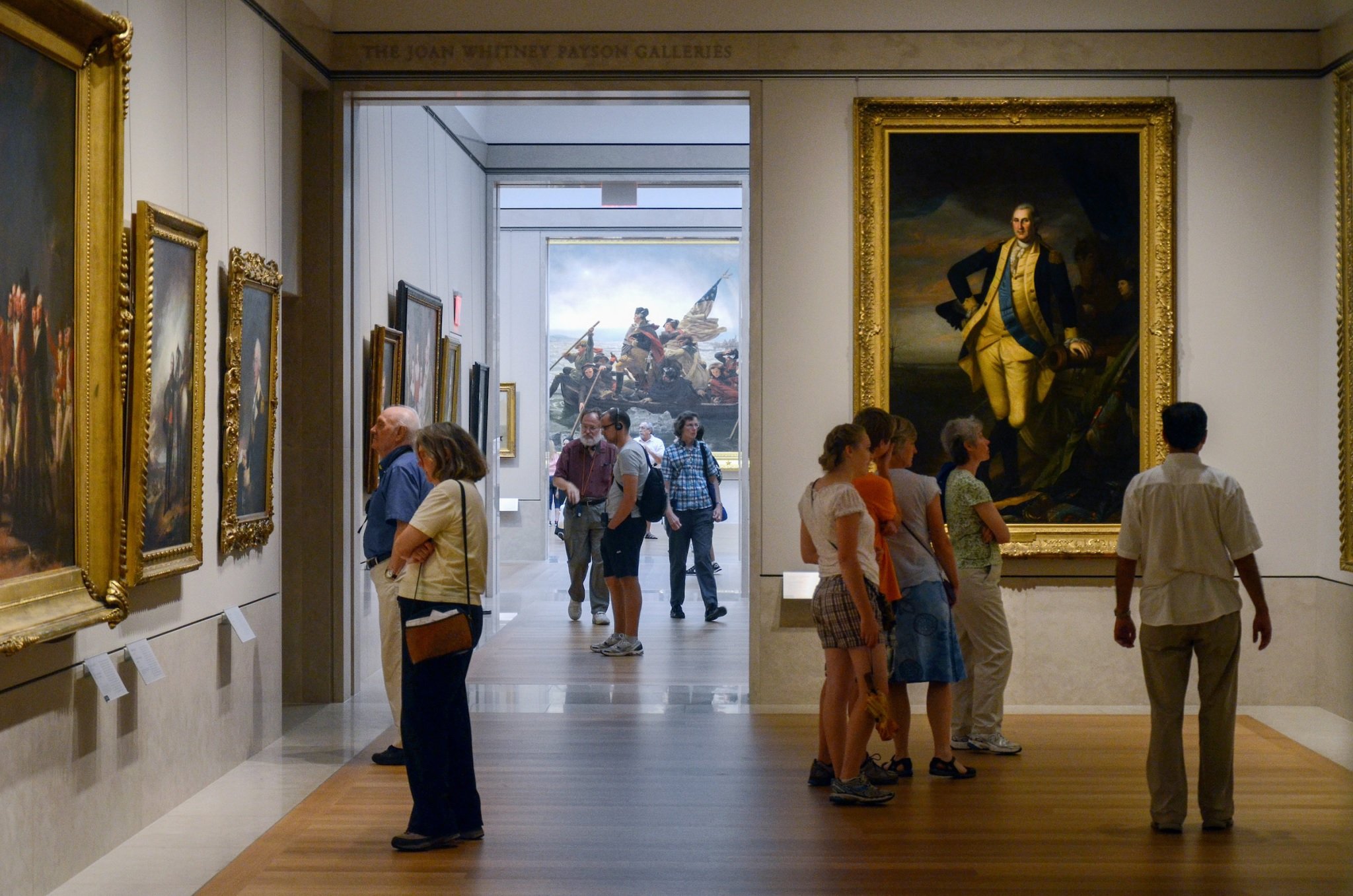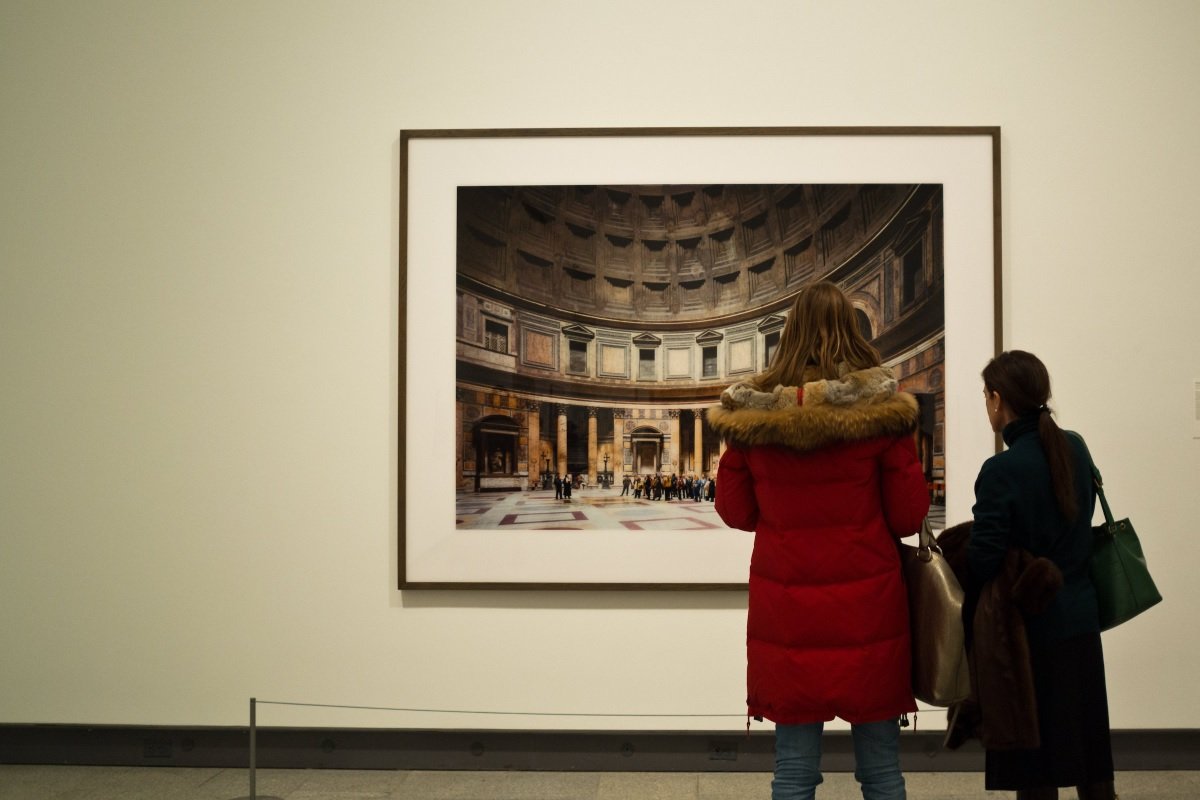Suffering From Anxiety? Try Visiting a Museum

Written by Elaine Velie. Originally published by Hyperallergic, June 20, 2022.
It turns out that visiting a museum is good for your health: New research from the University of Pennsylvania found reductions in anxiety and depression and increases in cognitive function and empathy, among a number of other promising outcomes.
“Art museums have great potential to positively impact people, including reducing their stress, enhancing positive emotional experiences, and helping people to feel less lonely and more connected,” researcher Katherine Cotter told Hyperallergic.
The study, titled “Art Museums As Institutions for Human Flourishing,” was published in the Journal of Positive Psychology by Cotter and James O. Pawelski of the University of Pennsylvania. Their work is encompassed in the burgeoning field of positive psychology, which studies “the strengths that enable individuals and communities to thrive.” Drawing on research from different academic disciplines, the study is part of an initiative that examines how the arts and humanities affect “human flourishing” — a comprehensive framework that takes into account both “ill-being” (living with disease, disorders, or in negative states) and “well-being” (practicing positive health habits).
“We believe our collaborative and interdisciplinary work is all the more vital at a time when so many individuals and communities lack the levels of well-being they need to thrive,” Pawelski said.
Cotter initially planned to conduct studies at art museums, but when the COVID-19 pandemic shuttered institutions, she shifted gears. Instead of collecting the data themselves, Cotter and Pawelski compiled and reviewed over 100 research articles and government and foundation reports.
They discovered that visiting a museum reduced stress levels, frequent visits decreased anxiety, and viewing figurative art lowered blood pressure. They also found that museum visits lowered the intensity of chronic pain, increased a person’s life span, and lessened the likelihood of being diagnosed with dementia.
And people living with dementia saw mental and physical benefits as well: Spending time in a museum induced more dynamic stress responses, higher cognitive function, and improvements in the symptoms of depression.
Going to a museum also left elementary schoolers feeling “restored” and made medical residents feel less emotionally exhausted.
The encouraging findings didn’t end there: People living with dementia and people with severe mental health conditions were more cheerful, happy, uplifted, and engaged after visiting a museum, and older adults felt that their time viewing art was rewarding.

Beyond these individual gains, museums affected the way people interacted with each other. Museum visitors reported feeling less socially isolated; subsequently, they were able to build connections with others who shared their same interests. These visits also encouraged them to reflect on society at large.
“Potentially contributing to the view of art museums cultivating connection and community building are the mindset changes visitors undergo over the course of their visit,” the report says. “During the middle of the visit, compared to the beginning or end of the visit, visitors reported higher levels of reflection on societal topics (e.g. participating in community affairs, concerns for societal issues, contributing to the well-being of others), suggesting that the experience of the visit encourages different forms of reflection and thought processes.”
The report even found that engaging with art could boost one’s ability for empathy, especially when accompanied by a didactic or guided element. In one 2020 study, museum visitors who were asked to consider the perspective of Native American individuals depicted in a photography exhibition showed “greater empathy” towards them than visitors who received no viewing instructions.
“We hope it will inspire others to take up this work as well,” Pawelski said of the research, which is ongoing. The team now hopes to study how specific museum programming affects well-being and understand how to apply existing knowledge in the field of psychology to “further enhance the impacts of art museums,” Cotter said.
Pawelski and Cotter have also started on their next project — studying digital art’s impact on human flourishing. So far, Pawelski and Cotter’s research seems to point to one evident conclusion — visiting a museum makes you happier and healthier.
But the researchers also found barriers to achieving these outcomes, such as “feeling uncomfortable within the art museum or not being able to connect with the art on exhibit.”
“As new programs and activities are developed for art museums, it is important to ensure programs are accessible and of interest to a wide range of people,” they wrote. “One potential option for the creation of more accessible art museum programming or offerings is through development of digital programs or resources, as these reduce barriers related to geographical access or ability to afford admission fees.”